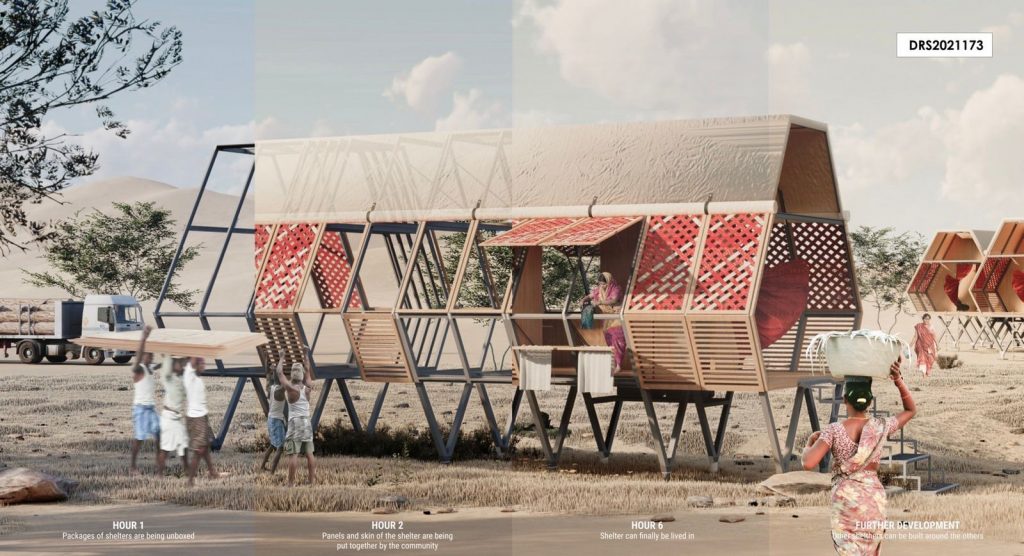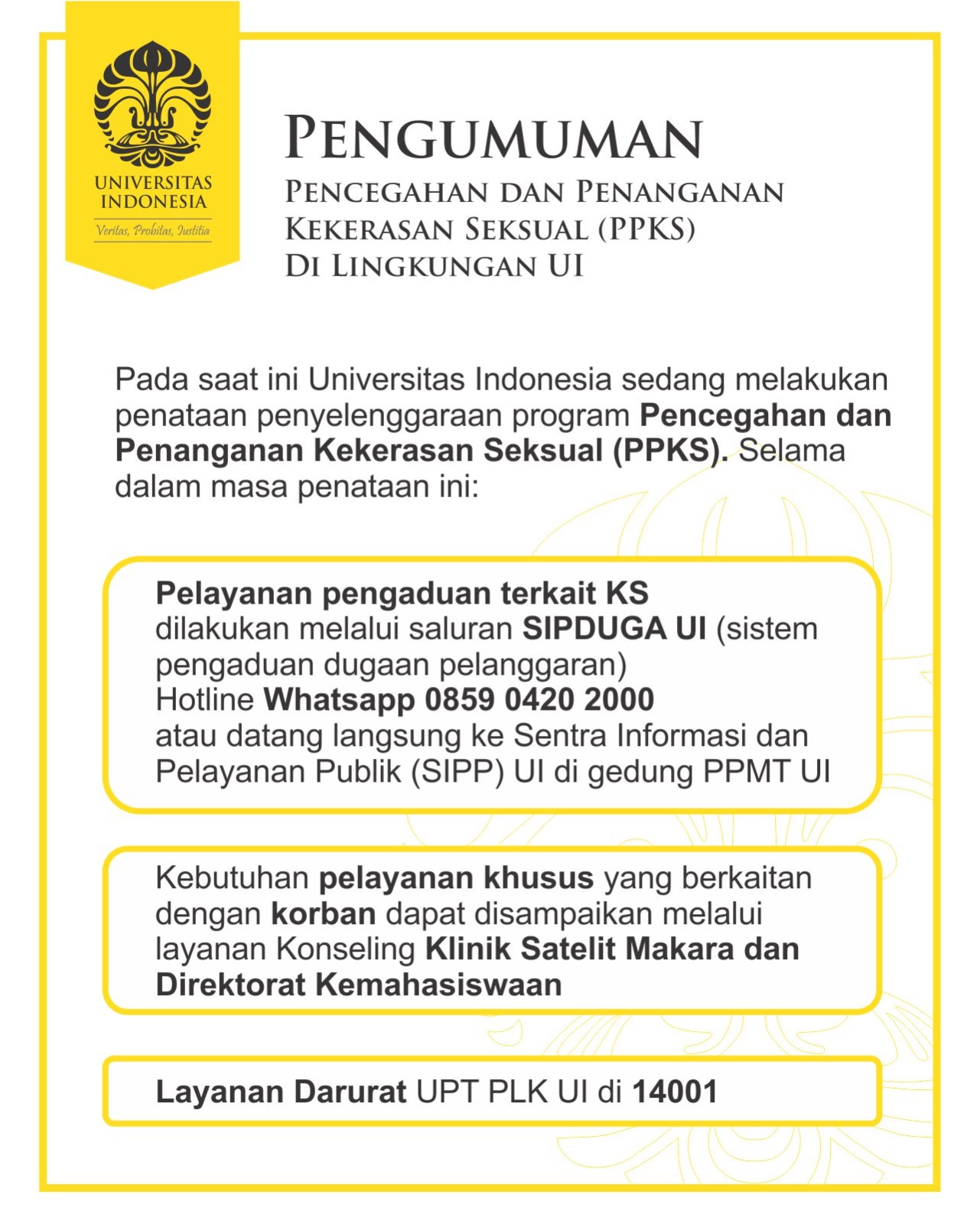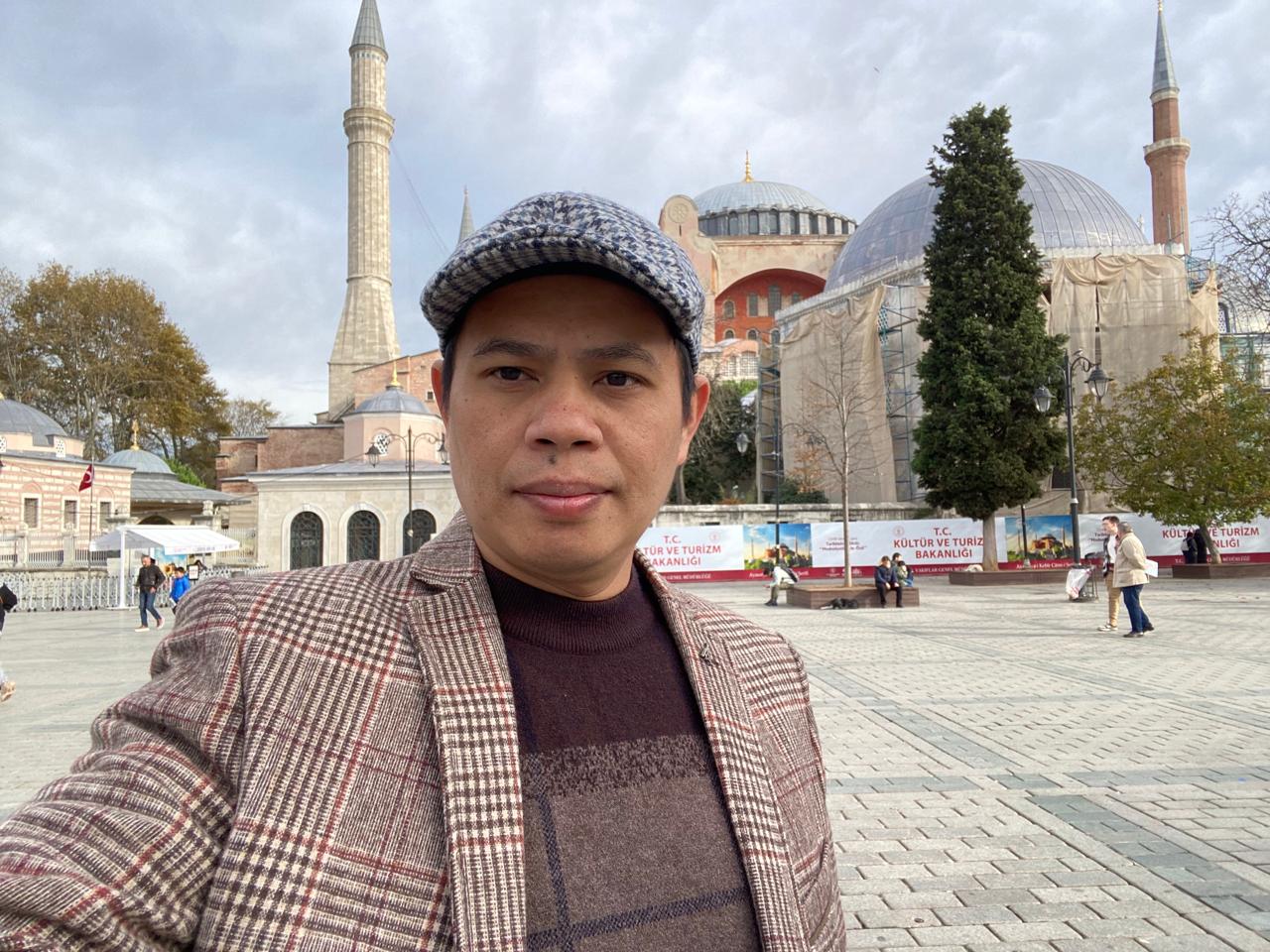
Post-disaster reconstruction and recovery is complex and poses many challenges for the people who experience it, and for the government. In the event of a disaster that destroys the house you live in, the need for shelter is urgent. Three students of the Department of Architecture, Faculty of Engineering, Universitas Indonesia (FEng UI) class of 2018, tried to answer the need for shelter design for disaster areas, which they named “Narana Shelter.” It can be built in just six hours.
The Narana Shelter design eliminated 350 other entries from around the world in a competition organized by Mango Architecture (June 15 – December 15, 2021) under the theme “Disaster Relief Shelter-Reinventing the Tents”. Narana Shelter is an adaptive modular shelter that allows for customization and growth according to the phase needs of the survivors. The shelter maintains community identity by respecting locality and culture, provides a safe place, and can be easily assembled and disassembled.
The FEng UI team that competed in the event consisted of Ariq Dhia Athallah, Gusti Ayu Putu Nadya, Nadya Fatin Nur Rahma Sultan, guided by lecturers of the FEng UI Architecture Department and professional architects, namely Ir. Evawani Ellisa, M.Eng., Ph.D.; Baiq Lisa Wahyulina, S.T., M.Ars., IAI; and Farrell Jeremiah, S.Ars. This team won 1st place in the international architectural competition ‘Disaster Relief Shelter’, for the category of disaster mitigation in cities in India.
 Evawani Ellisa who is known as an urban design expert explained, “Although the Narana shelter design is being contested for the provision of disaster shelters in Indian cities, this design is also very suitable for use in Indonesia. In addition to the similarity of climate, the people of India and Indonesia have similarities in terms of the close identification of individuals with local cultures. For use in Indonesia, the saree can be replaced with Indonesian batik cloth, which is also one of the proud identities of the Indonesian people.”
Evawani Ellisa who is known as an urban design expert explained, “Although the Narana shelter design is being contested for the provision of disaster shelters in Indian cities, this design is also very suitable for use in Indonesia. In addition to the similarity of climate, the people of India and Indonesia have similarities in terms of the close identification of individuals with local cultures. For use in Indonesia, the saree can be replaced with Indonesian batik cloth, which is also one of the proud identities of the Indonesian people.”
“Shelters that do not pay attention to local wisdom can actually have a negative impact on disaster victims. Loneliness and a sense of hopelessness, can arise in victims of natural disasters, who feel disconnected from their identity as part of a community. To avoid these negative impacts, the shelter is designed to meet the basic needs of individual biological survival, as well as maintain identity in the community,” said Ariq.
“On the other hand, emergency shelters must be built as practically as possible. Therefore, we have the idea to design a modular shelter that is built by utilizing surface mechanisms as our main strategy. We design a comprehensive building structure and emergency system for a sustainable community,” said Gusti Ayu.
 “We used the saree as part of the Narana shelter design. Saree has been rooted into Indian culture since 2800-1800 BC. Over time, each region of India has developed its own style of saree. The saree is one of the common threads that connects Indian identity and culture as a whole. Saree is more than just an outfit or fabric. Saree represents intimacy, identity and sense of belonging to Indian society,” said Nadya.
“We used the saree as part of the Narana shelter design. Saree has been rooted into Indian culture since 2800-1800 BC. Over time, each region of India has developed its own style of saree. The saree is one of the common threads that connects Indian identity and culture as a whole. Saree is more than just an outfit or fabric. Saree represents intimacy, identity and sense of belonging to Indian society,” said Nadya.
Saree fabric can be used in shelter design as a room divider and roof layer. The saree fabric is aerodynamic, filters light, serves as a cover, provides warmth at night and shade from India’s hot climate. The characteristics of the saree fabric allow for dynamic air circulation between spaces within the shelter. Besides using whole sarees, Narana’s shelter development also allows the use of recycled sarees that are unused, torn or damaged, using a weaving technique.



